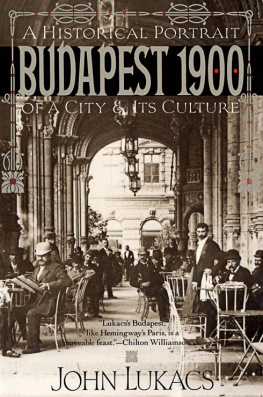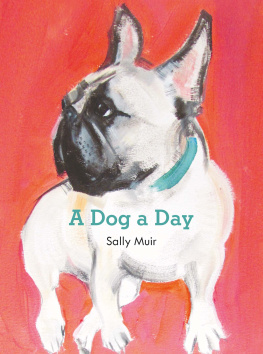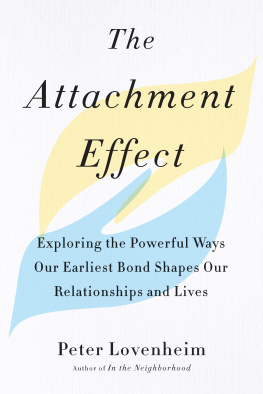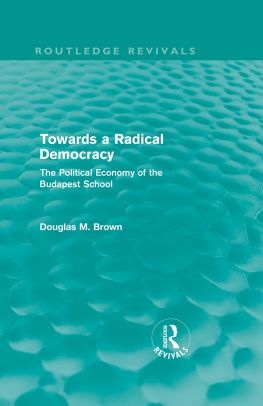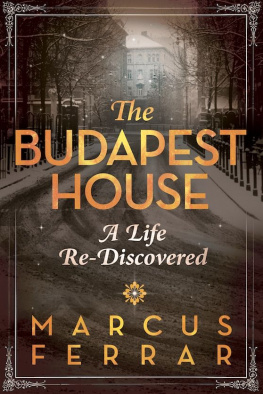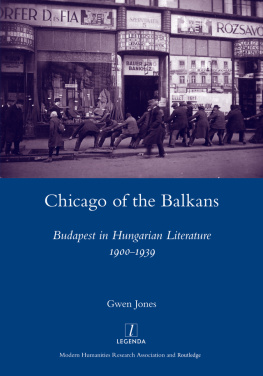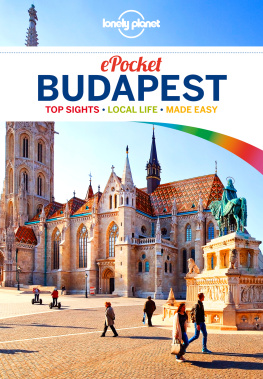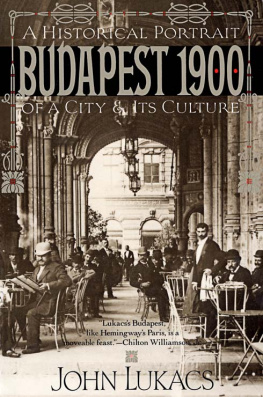
Budapest 1900
Also by John Lukacs
THE GREAT POWERS AND EASTERN EUROPE
TOCQUEVILLE: THE EUROPEAN REVOLUTION AND CORRESPONDENCE WITH GOBINEAU (ED.)
A HISTORY OF THE COLD WAR
DECLINE AND RISE OF EUROPE
A NEW HISTORY OF THE COLD WAR
HISTORICAL CONSCIOUSNESS
THE PASSING OF THE MODERN AGE
THE LAST EUROPEAN WAR, 19391941
1945: YEAR ZERO
PHILADELPHIA: PATRICIANS AND PHILISTINES, 19001950
OUTGROWING DEMOCRACY: A HISTORY OF THE UNITED STATES IN THE TWENTIETH CENTURY
Budapest 1900
A Historical Portrait or a City
and Its Culture
John Lukacs

Grove Press
New York
Copyright 1988 by John Lukacs
All rights reserved. No part of this book may be reproduced in any form or by any electronic or mechanical means, including information storage and retrieval systems, without permission in writing from the publisher, except by a reviewer, who may quote brief passages in a review. Scanning, uploading, and electronic distribution of this book or the facilitation of such without the permission of the publisher is prohibited. Please purchase only authorized electronic editions, and do not participate in or encourage electronic piracy of copyrighted materials. Your support of the authors rights is appreciated. Any member of educational institutions wishing to photocopy part or all of the work for classroom use, or anthology, should send inquiries to Grove/Atlantic, Inc., 841 Broadway, New York, NY 10003 or .
Published simultaneously in Canada
Printed in the United States of America
Library of Congress Cataloging-in-Publication Data
Lukacs, John, 1924
Budapest 1900 / by John Lukacs.
p.cm.
Bibliography: p.
Includes index.
ISBN: 9780802194213
1. Budapest (Hungary)Civilization. I. Title.
DB988.L841988
943.91dc1988-15290
Designed by Ronnie Ann Herman
Map by Arnold Bombay
Grove Press
an imprint of Grove/Atlantic, Inc.
841 Broadway
New York, NY 10003
Distributed by Publishers Group West
www.groveatlantic.com
10 11 12 13 1415 14 13 12 11 10
| DEDICATED TO | AJNLOM |
| MONSIGNOR BLA VARGA, | FTISZTELEND VARGA BLNAK, |
| A GOD-GIVEN INCARNATION | AZ ISTENADTA NEMES |
| OF WHAT IS NOBLE AND BEST | MAGYAR EMBERSZERETET |
| IN MAGYAR HUMANISM | MEGTESTESITJNEK |
Table or Contents
The painter Munkcsys funeral (p. 3). His rise (p. 6) and fall (p. 8). The seasons of Budapest (p. 10). The atmosphere of the city in 1900 (p. 19). Three writers of Budapest in 1900 (p. 16). Krdys descriptions of the city (p. 19). Differences between Budapest and Vienna (p. 27). 1900 a turning point in the history of Budapest (p. 28).
Its physical situation (p. 30). Its districts (p. 32). Its buildings and architecture (p. 48). The crowding of the city (p. 53). Rail, river and road; other communications; public services (p. 57). Material progress and population increase (p. 62). The reputation of Budapest abroad (p. 65).
The historical development of Buda and Pest (p. 68). Their unification (p. 70). The Millennium (p. 71). State and conditions of the population in 1900 (p. 73). Bourgeois influences (p. 75). Culinary habits and changes (p. 77). Criminality and prostitution (p. 81). Athletics and sports (p. 83). The structure of classes; the old nobility (p. 85), the gentry (p. 87), the financial aristocracy and the patrician class (p. 95). Changes in the composition of the wealthy classes (p. 95). The Jewish population (p. 95). The working classes (p. 97). The rigidities of class consciousness (p. 99). Social mobility (p. 100). The Magyarization of Budapest (p. 102). Elements of bourgeois civilization (p. 103). Relations of the sexes (p. 104). Financial lightheadedness and probity (p. 106).
The Parliament (p. 108). Rhetorical habits and customs (p. 109). Nationalist optimism (p. 110). The worsening of parliamentary behavior (p. 111). Historical and constitutional development of the Hungarian state (p. 112). The Compromise of 1867 (p. 116). The political crisis of 1890 (p. 117). The unraveling of the political equilibrium (p. 120). The fallings of Hungarian prestige abroad (p. 123). The problem of the nationalities (p. 125). The decline of Liberalism (p. 129). The Social Democrats (p. 130). Anti-Semitism (p. 131). The new Catholic party and movement (p. 132). The 1905 elections and the end of the Liberal monopoly in Budapest (p. 135).
The concept of generations (p. 137). What the Generation of 1900 had in common (p. 138). Its members (p. 139). The Budapest schools (p. 142). The cultural atmosphere (p. 146). Book publishing (p. 147). The coffeehouses and their culture (p. 148). The Budapest press (p. 152). Literary journals (p. 152). Hungarian literature in 1900 (p. 154). Writers of the generation of 1900 (p. 156). Three well-known writers abroad (p. 157). The great writers unknown abroad (p. 159). The Ady explosion (p. 164). The populist pioneers (p. 168). The boulevardier talents (p. 170). The new painters of the generation (p. 171). The modern nationalist architects (p. 174). Bartk and Kodly (p. 175). Theatrical and musical culture and the entertainment industry (p. 176). Retrospective criticism of a generation by Szekf and others (p. 179). Its subsequent revision (p. 180).
Decline of the general equilibrium in 1900 (p. 182). Attacks on Liberalism (p. 183). The changing condition of the gentry (p. 183). A new nationalism (p. 185). Attacks on Budapest (p. 187). A new variety of anti-Semitism (p. 188). Left and Right: the symptomatic development of the Society of Social Science (p. 197). A semblance of prosperity and peace before 1914 (p. 204). Catholicism in Budapest around 1900 (p. 204). The summer of 1914 (p. 205). German ideological and cultural influences (p. 206).
Budapest during the First World War (p. 209). The end of the Austro-Hungarian monarchy and the Budapest October Revolution (p. 210). The short-lived Radical and Communist governments (p. 211). The nationalist reaction (p. 212). The amputation of Hungary (p. 212). The recovery of the twenties (p. 213). The shadow of the Third Reich (p. 214). Budapest during the Second World War (p. 215). Its German and Russian occupation; the siege of Budapest (p. 216). Its destruction (p. 218). Under Communism (p. 221). The 1956 Rising (p. 222). The rebuilding of the city (p. 223). The tourist invasion; Budapest revisited (p. 224).
List or Illustrations
Introduction
I n 1900 Budapest was the youngest of the great metropolises of Europe (perhaps, except for Chicago, of the world). In twenty-five years its population had trebled and its buildings had doubled, and the city was pulsing with physical and mental vigor. Among other things, this provides a certain contrast to its then twin capital of the Austro-Hungarian Dual Monarchy, to Vienna in 1900, about which so many books have been published in English during the last twenty-five years. Most of these have concentrated on certain themes; they are, therefore, fairly selective portraits of a city. Most of these, too, have been liberal not only in their selection of themes but also in their chronological treatment. I have been more rigorous: except for the last chapter, which is a kind of coda for English-speaking readers who may wish to know what happened Since Then (the title of that chapter), this book is centered on 1900at the most, on the ten years 1896 to 1906. This was not difficult, because by a historically unusual coincidence the year 1900 was a zenith and a turning point in the history of Budapest in more than one way, and on more than one level (and so was that year of crisis, 190506). Perhaps more difficult was my attempt to compose the portrait of a city on many levels, including its physical description together with the description of the lives of its various classes of people.
Next page
